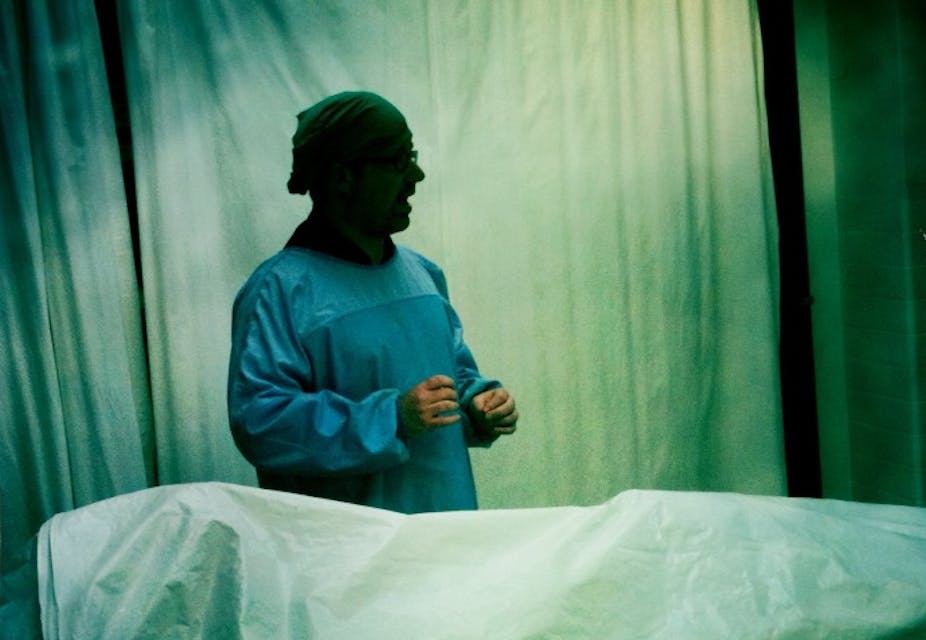Very few, if any, medical students would say their reason for wanting to become a doctor is so they can face death on a regular basis. Yet it is a crucially important part of the job, especially when patients need palliative care; doctors have to be willing and able to care for patients with incurable and life-limiting illnesses.
To provide good palliative care all healthcare professionals, including doctors, should be able to provide pain and symptom control, psychological and social support, as well as disease-focused treatments. The aim of palliative care is to support patients who are living with a closer prospect of death to continue to live their lives with as much quality as possible, even while they are dying. However, many junior doctors report feeling ill-equipped and unprepared to discuss palliative and end of life care with patients.
While this kind of work can be rewarding, it can also be challenging. Many students have little exposure to death and dying before entering medical school. Doctors are no different to other people: some might choose to cope by creating an emotional distance or detachment, others might become too personally involved, others might avoid patients with life limiting illnesses if they don’t think they can help. However, ultimately, disinvestment isn’t best for patients.
In research carried out with first and second year medical students about perceptions of students, following early clinical placements including attending an autopsy, detachment and avoidance were described partly as mechanisms for self-protection but also justified as a means of protecting patients from distress caused by students’ and doctors’ sense of their own limitations and emotional reactions.
The research found that from the very beginning medical students are caught in a tension between a normal “lay” person reaction to death and their perceptions of what the “professional reaction” should be. These tensions were illustrated in the research by the language medical students used after attending autopsies: switching back and forth between relating to individual patients as people, albeit people who have died, and referring to them as objects.
At this very early stage of their careers these students also described autopsies as an opportunity to “meet” real patients, albeit it after death, and to learn about preceding illness and healthcare experiences of these patients, as well as the cause of death. They described their experiences as initially “scary” and many reflected on their own mortality. This was balanced by a strong desire to demonstrate they could cope, they “had what it takes” to be a doctor.
The experience of an autopsy may seem a long way from learning to care for the patient who is living with the prospect of death, but this research shows there is potential for it to help medical students develop important transferable skills. For example, understanding the processes around autopsies can help develop appropriate communication skills. Two pathologists interviewed in the research said an important part of their job was explaining the important purposes of an autopsy to bereaved relatives, and the ability to complete the procedure in a dignified manner.
Doctors, along with other healthcare professionals, are required to competently explain what is happening and support a patient, their family and friends during the dying process. If an autopsy is either requested or required by law then doctors need to be able to compassionately explain what will happen and what the body will look like afterwards. This requires communication skills such as sensitivity, clarity of language, and responding appropriately to distress. These skills are equally core to good palliative care.
Medical students need the support of experienced clinicians to make links between learning in different contexts and to integrate their learning from the many component parts of a medical curriculum. Autopsies are an opportunity to learn about death and dying in a social context, including the role of doctors interacting with dying patients and their families.
Careful consideration should be given to helping students learn to balance being able to function as a professional in challenging situations while remaining engaged in compassionate care that meets their patients’ needs. Doctors, patients and relatives have an opportunity to help medical students as future clinicians to understand more about death and dying by discussing their experiences and sharing what they have learned from these. And if medical students are better prepared, they will better support those at the end of their life, as well as their families before and after bereavement.
Sarah Yardley is speaking at Death Salon UK 2014 at Barts Pathology Museum, part of Queen Mary, University of London.

